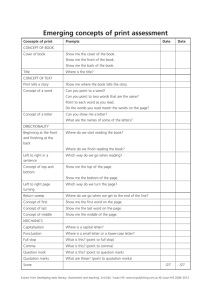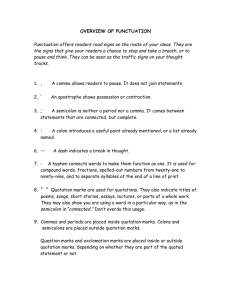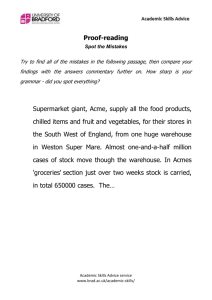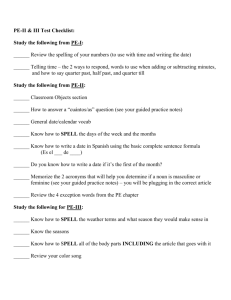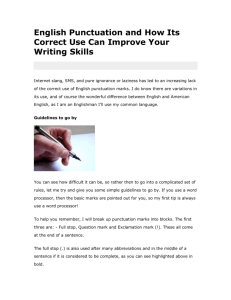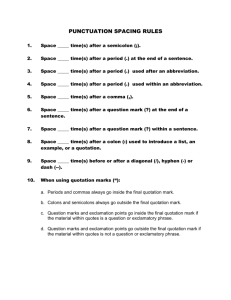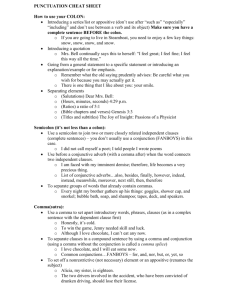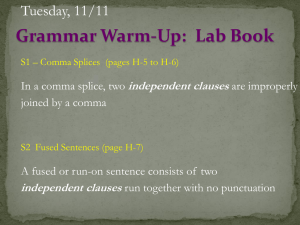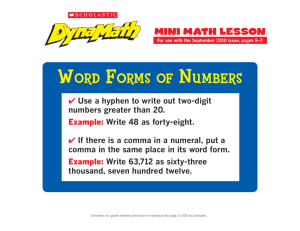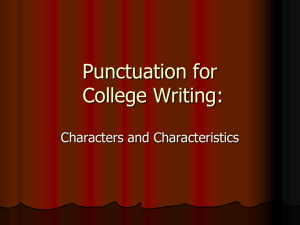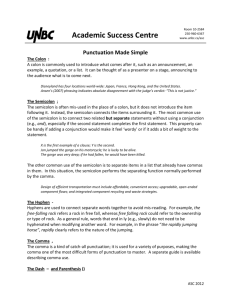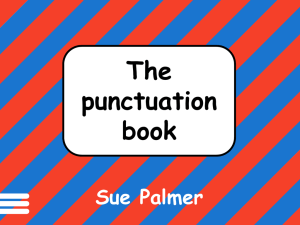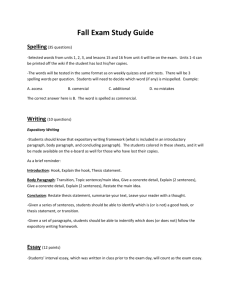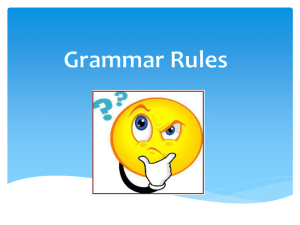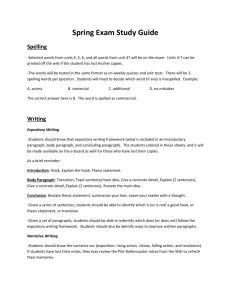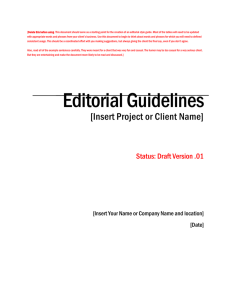Communications Ministry Style Guide
advertisement
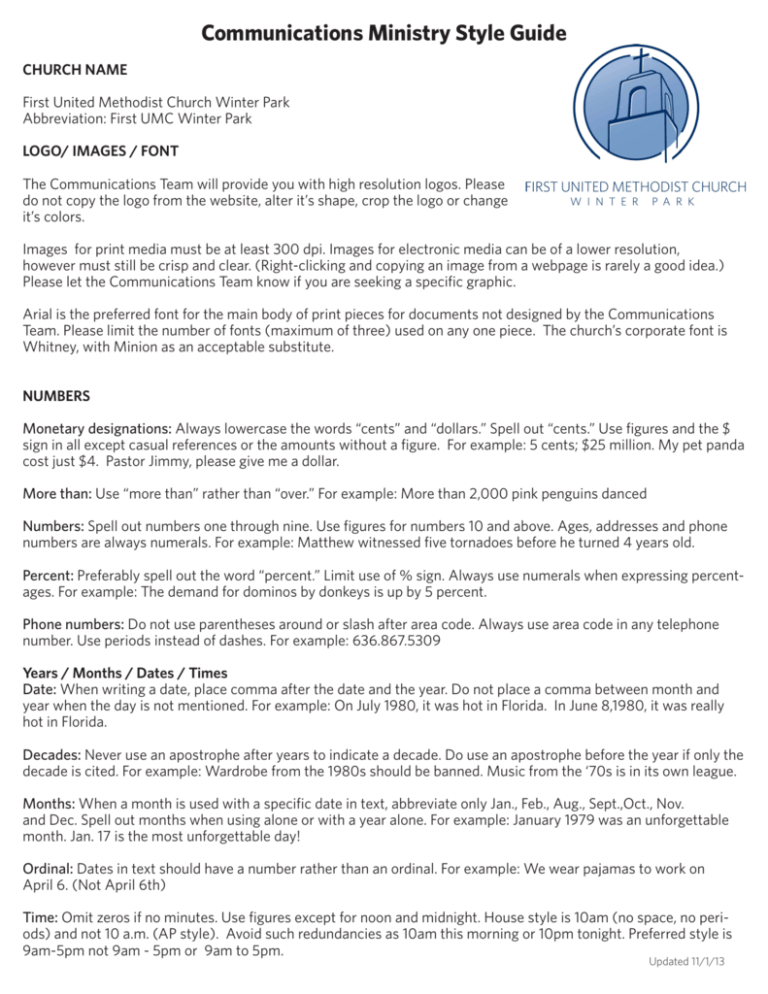
Communications Ministry Style Guide CHURCH NAME First United Methodist Church Winter Park Abbreviation: First UMC Winter Park LOGO/ IMAGES / FONT The Communications Team will provide you with high resolution logos. Please do not copy the logo from the website, alter it’s shape, crop the logo or change it’s colors. Images for print media must be at least 300 dpi. Images for electronic media can be of a lower resolution, however must still be crisp and clear. (Right-clicking and copying an image from a webpage is rarely a good idea.) Please let the Communications Team know if you are seeking a specific graphic. Arial is the preferred font for the main body of print pieces for documents not designed by the Communications Team. Please limit the number of fonts (maximum of three) used on any one piece. The church’s corporate font is Whitney, with Minion as an acceptable substitute. NUMBERS Monetary designations: Always lowercase the words “cents” and “dollars.” Spell out “cents.” Use figures and the $ sign in all except casual references or the amounts without a figure. For example: 5 cents; $25 million. My pet panda cost just $4. Pastor Jimmy, please give me a dollar. More than: Use “more than” rather than “over.” For example: More than 2,000 pink penguins danced Numbers: Spell out numbers one through nine. Use figures for numbers 10 and above. Ages, addresses and phone numbers are always numerals. For example: Matthew witnessed five tornadoes before he turned 4 years old. Percent: Preferably spell out the word “percent.” Limit use of % sign. Always use numerals when expressing percentages. For example: The demand for dominos by donkeys is up by 5 percent. Phone numbers: Do not use parentheses around or slash after area code. Always use area code in any telephone number. Use periods instead of dashes. For example: 636.867.5309 Years / Months / Dates / Times Date: When writing a date, place comma after the date and the year. Do not place a comma between month and year when the day is not mentioned. For example: On July 1980, it was hot in Florida. In June 8,1980, it was really hot in Florida. Decades: Never use an apostrophe after years to indicate a decade. Do use an apostrophe before the year if only the decade is cited. For example: Wardrobe from the 1980s should be banned. Music from the ‘70s is in its own league. Months: When a month is used with a specific date in text, abbreviate only Jan., Feb., Aug., Sept.,Oct., Nov. and Dec. Spell out months when using alone or with a year alone. For example: January 1979 was an unforgettable month. Jan. 17 is the most unforgettable day! Ordinal: Dates in text should have a number rather than an ordinal. For example: We wear pajamas to work on April 6. (Not April 6th) Time: Omit zeros if no minutes. Use figures except for noon and midnight. House style is 10am (no space, no periods) and not 10 a.m. (AP style). Avoid such redundancies as 10am this morning or 10pm tonight. Preferred style is 9am-5pm not 9am - 5pm or 9am to 5pm. Updated 11/1/13 STYLE GUIDE (11.01.13) Punctuation/ Misc. Abbreviations: Do not use abbreviations or the ampersand (&) unless part of an official title. Acronyms: Always spell out the full name on first use with acronym in parenthesis. For example: Vacation Bible School (VBS) will be held December 12, 2014. Capitalization: Always capitalize the following: God, Lord, Messiah, the Son, Holy Spirit, Bible, Scripture, the Gospels and all holy days. When using personal pronouns (“he,” “him,” etc.) to refer to God, capitalize them in all instances. Commas: Do not put a comma before the conjunction in a simple series. Place a comma before the concluding conjunction in a complex series of phrases. Ellipsis: Use an ellipsis ( ... ) like a three-letter word, constructed with three periods and two spaces. Email Address: Entire address should be lower case, including the word “email” unless used at the beginning of a sentence. Also, use “email” rather than “e-mail,” and “website” rather than “web site.” Em Dash: Use (sparingly) in place of comma, semicolon, colon or parenthesis. For example: The youth group is meeting at Fritz’s this week—mark your calendar! En Dash: Used to express starting and ending times, and do not space before or after. (9am-10pm) Italics: Place the following in italics: Magazine titles, books, newspapers, movies, poems, television series, plays and website addresses/pages. For example: fumcwp.org/register Headlines: Use down-style capitalization, which means that only the first letter of the headline and any proper nouns are capitalized. Hyphenate: Hyphenate a compound in which one is a number and the other is a noun or adjective. For example: 3-mile run; 10-year-old (but 10 years old); 12,000-square-foot building Punctuation in Quotes: Commas and periods always go inside quotation marks. The dash, the semicolon, the question mark and the exclamation point go within the quotation marks when they apply to the quoted matter only. They go outside when they apply to the whole sentence. Quotation Marks: Use quotation marks for articles, chapter, television episodes, songs, lecture titles. Spaces: Use one space after periods and after semicolons. Use two after a colon. Know what you are writing and why. Moving beyond writing style, please consider carefully what you need to communicate. What is the purpose? Who is the audience? What is the call to action? What do you want people to do? Too often we write about something but we never tell people what we actually want them to do. You can’t assume they’ll figure it out. Tell them. Are they supposed to come to the Pancake Supper? Sign up for it? Offer to help? Tell their friends about it? Pick one, then make it clear, simple and easy. Remember that the purpose is about big picture, but the call to action needs to be specific. Make sure to consider the audience for each communication channel. For example, the audience for the worship bulletin is the entire congregation and not just a ministry group or target audience. When writing for digital communications, consider that most readers scan the content so keep it brief. Updated 11/1/13
